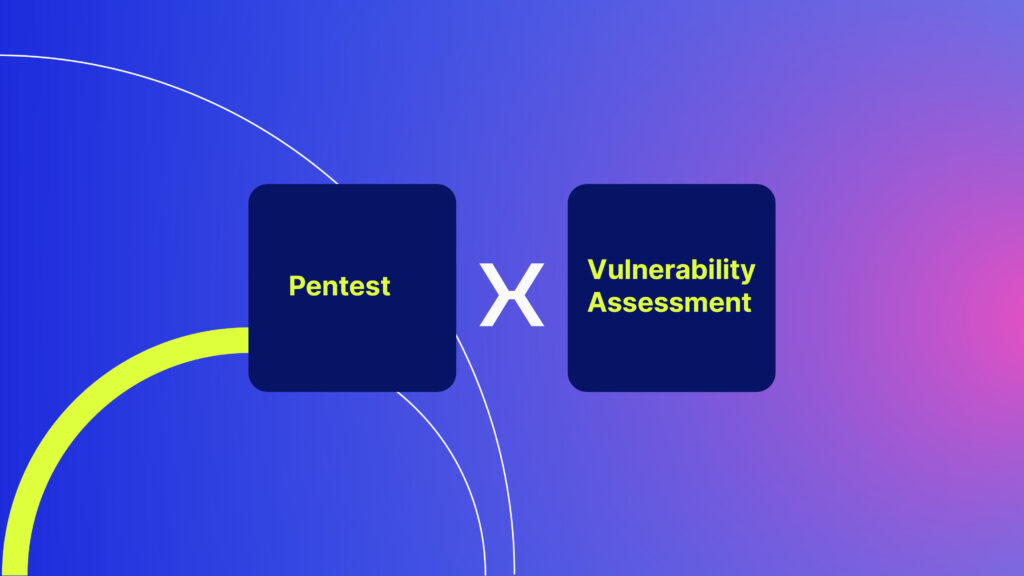In the complex world of cybersecurity, it is common for two tools to frequently appear in IT teams' plans: Pentest and Vulnerability Assessment .
And it's no surprise: threats in the digital world are becoming increasingly sophisticated, and according to the Ponemon Institute , companies take, on average, 280 days to find the source of a data breach following a cybersecurity issue. .
That's why having tools that help prevent attacks is essential in today's corporate world. However, although Pentest and Vulnerability Assessment are focused on identifying weaknesses in a system's security, they approach this objective in different ways .
So, in this article, we will dive into the differences between these two tools, highlighting their methodologies, objectives and effectiveness. If you've ever wondered which of these approaches is best suited for your organization or project, this text will offer valuable insights
Stay with us!
What is a Pentest?
Pentest (or penetration testing) is a methodology for evaluating the security of a system. Carried out by a qualified penetration tester, also known as an “ethical hacker”, its objective is to identify and exploit vulnerabilities in an IT environment , be it a network, application or system.
During a Pentest, the security specialist uses a series of tools and techniques to simulate cyber attacks in a controlled manner. Thus, this approach allows the organization to understand how well its system can withstand a real onslaught, and what measures can be taken to strengthen defenses.
The utility of a Pentest is in providing a realistic view of where and how an attack may occur, allowing the organization to proactively improve its security posture.
Test findings inform potential improvements to security controls and help prevent future compromises.

What is a Vulnerability Assessment?
A Vulnerability Assessment is a process that involves identifying , classifying and prioritizing vulnerabilities in computer systems, networks and IT infrastructure. Its goal is to determine weaknesses that can be exploited by threats such as hackers , malware and other forms of cyber attacks.
During a Vulnerability Assessment, automated tools and manual techniques are used to scan systems for known security flaws. This may include checking for misconfigurations, software , missing patches , password issues, and other poor security practices.
Thus, the results offer a detailed view of the vulnerabilities present and provide crucial information so that organizations can make informed decisions about how to prioritize and approach security fixes.
What are the main differences between the two?
When we look at Pentest and Vulnerability Analysis, we see clear variations in objective , frequency , scope , execution and reporting . Thus, these information security methodologies are intended to identify and mitigate risks in different ways. Look:
Goals
Vulnerability analysis focuses on identifying known vulnerabilities in systems and networks, without the need to exploit them. Pentest is more in-depth and seeks not only to find, but also to explore vulnerabilities to understand the real impact of a potential attack.
Frequency
The frequency with which vulnerability analysis is carried out tends to be higher , as it is a faster and less intrusive process. The Pentest , as it is more complex and detailed, is carried out less frequently , commonly annually or as needed to comply with specific regulations.
Scope and approach
In terms of scope and approach, vulnerability analysis generally has a broader scope , covering a large number of systems, while Pentest is more concentrated, limiting itself to a narrower scope and being more directed at specific targets . The Pentest approach can vary – being black box, white box or gray box – depending on the level of information shared about the target environment.
Execution
On execution, vulnerability analysis typically uses automated tools that scan systems for known flaws. In Pentest , execution involves simulating real attacks, often manually , by pentesters who apply specialized techniques and tools to replicate an adversary's behavior.
Reports
Vulnerability analysis reports are typically lists of flaws found with recommendations for remediation. Pentest reports , in addition to including the exploited vulnerabilities, detail the process carried out and the potential impact of the attacks, offering a more comprehensive view of weaknesses and a strategic plan to improve the system's defense.
Advantages of Pentest
As we have seen, carrying out a Pentest is essential to identify and correct vulnerabilities in IT systems. It is a proactive approach that allows companies to strengthen their defenses against cyber attacks. Its main benefits are:
- Identification of vulnerabilities: through attack simulations, Pentests reveal weaknesses that could be exploited by attackers;
- Risk assessment: they allow a critical assessment of the current cybersecurity capacity of organizations;
- Skills development : carrying out Pentests helps develop the practical skills of security professionals, as provided for in the CompTIA Pentest+ certification;
- Security strategy: based on the results, it is possible to create more effective security strategies, focusing on the company's specific needs;
- Continuous improvement: Pentest encourages the implementation of security measures in an iterative and scalable way;
- Compliance: Companies remain aligned with information security regulations and standards.
Advantages of Vulnerability Assessment
Carrying out a vulnerability analysis is important to ensure information security in organizations. This methodology consists of a series of processes that identify, quantify and prioritize vulnerabilities in systems. Some of its advantages are:
- Vulnerability identification: the main advantage is the ability to identify existing security flaws in IT systems before they can be exploited by attackers;
- Risk prioritization: the assessment helps classify identified vulnerabilities according to their risk level, which allows organizations to prioritize fixes for the most critical vulnerabilities;
- Regulatory compliance : Many industries require regular vulnerability assessments to comply with security standards and regulations such as PCI DSS, HIPAA, GDPR, and others;
- Risk reduction: By remediating identified vulnerabilities, organizations can significantly reduce the risk of experiencing cyberattacks and data breaches.
Pentest vs. Vulnerability Assessment: use cases
In information security, Pentest and Vulnerability Assessment are complementary techniques, but, as we have seen, with different purposes. Both are essential for maintaining network security and web application security, but they are applied in different situations.
Pentest is a highly targeted , simulating a malicious attack. It uses reconnaissance techniques and other strategies to identify not only vulnerabilities, but also the real possibility of exploitation. Therefore, it is ideal for scenarios where systems and applications need to be tested against specific and sophisticated attacks.
On the other hand, vulnerability analysis is often used to map potential flaws in a broader IT environment. Uses automated tools to scan systems and identify known vulnerabilities. Due to its breadth, it may not detect complex failures that require a manual approach, but it is excellent for identifying risks that could be easily exploited.
Pentest use cases :
- Application security assessment before important releases;
- Test the effectiveness of security controls after an incident;
- Validate security measures for regulatory compliance.
Vulnerability Assessment use cases :
- Initial analysis to understand the threat landscape;
- Continuous monitoring of IT infrastructure;
- After implementing patches to ensure bug fixes.
Keep your business secure with Skyone
Successful companies recognize the importance of cybersecurity in the contemporary business environment. Therefore, Skyone offers a multifaceted approach to protecting IT infrastructures against a wide variety of threats.
It doesn't matter if you are looking for a Pentest or a vulnerability analysis : our platform brings together these and other solutions that protect your company's data and systems from intruders and threats, with continuous monitoring.
Conclusion
The reality is that sensitive data, when exposed, can result in irreparable harm to companies. That's why investing in cybersecurity measures means being one step ahead in the market.
Therefore, regularly implementing tools like Pentest is a strategy that significantly contributes to an organization's resilience in the face of constantly evolving digital threats. It is essential to ensure that security practices are efficient and up to date, reflecting the commitment to protecting vital assets.
Take advantage of our knowledge trail and learn everything about Pentest in a special guide!




